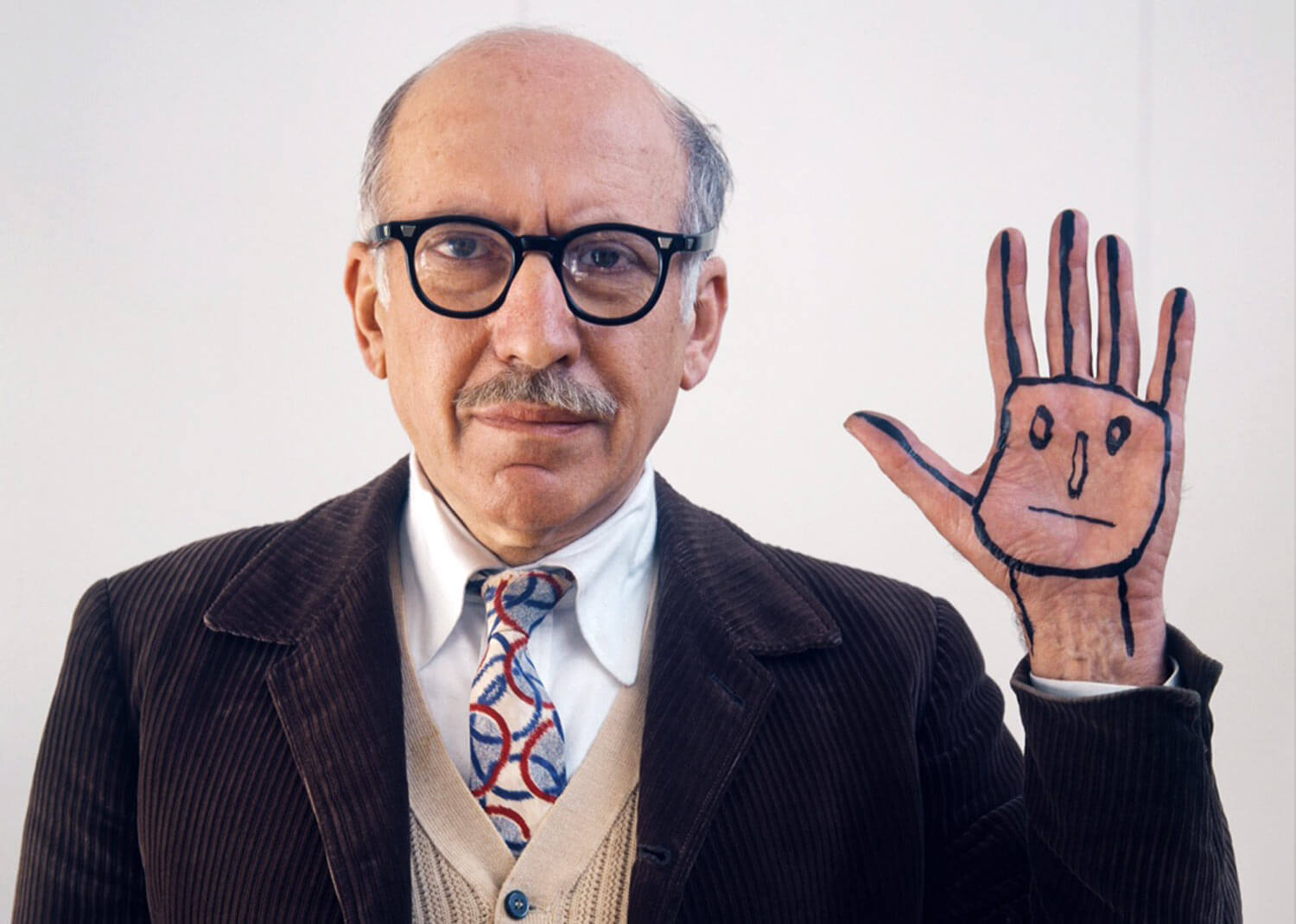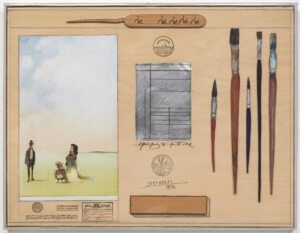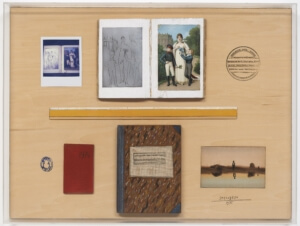A pioneer of graphic art in Post-War America, Romanian-born Saul Steinberg (1914–1999) is widely celebrated for the magazine covers and drawings he produced for The New Yorker for nearly six decades. He is equally acclaimed for his dexterity in a wide range of media, from painting, print, and collage to sculpture, all of which he exhibited internationally in galleries and museums.
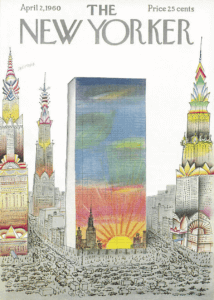

Cover of The New Yorker, 2 April 1960
Steinberg’s boundless creative practice and ever-evolving idiom defied easy definition, as the artist confessed: ‘I don’t quite belong to the art, cartoon or magazine world, so the art world doesn’t quite know where to place me’ (Jean vanden Heuvel, ‘Straight from the Hand and Mouth of Steinberg’, LIFE, 10 Dec., 1965, p. 66). Steinberg made no distinction between high and low art, which he freely conflated in an oeuvre that is stylistically diverse yet consistent in depth and visual imagination.
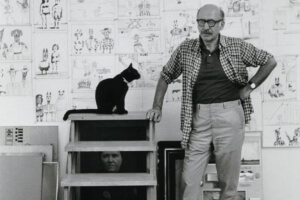

Steinberg, with his cat Papoose, in his Amagansett studio, 1973
The 1970s saw an exciting direction in Steinberg’s output in the form of ‘Drawing Table’ reliefs, also known as the ‘Table Series’ — intricate compositions filled with carved and painted trompe-l’oeil wooden objects representing the tools of his trade, the things around his studio, and even reiterations of his own work, past and present.
Saul Steinberg, Table Series: Artist, 1972, oil, watercolour, graphite, ink, coloured pencil, carved wood and metal collage on wood panel
These surveys of the creative act often fix on the transformative nature of the line that was the wellspring of his art. The hand holds the pen drawing the line, no matter whether that pen produces a casual scribble, a blank sheet of paper or an intricate design.
Saul Steinberg, The Queen Table, 1975, oil, watercolour, graphite, ink, coloured pencil, wood and metal collage on wood panel
Table Series: Artist and The Queen Table, offered for sale at Dickinson as part of an important single-owner collection, offer fascinating vignettes of the diverse source material for Steinberg’s work, including trompe-l’oeil books, sketches and photographs.
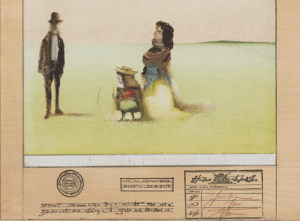

Detail of Table Series: Artist, 1972
Steinberg described himself as a ‘writer who draws’ and in these two works the artist combines image and text with calligraphic flourish. Here he conveys an incised metal plate, creating the illusion of light reflection and filling the sections with dynamic italicised script.
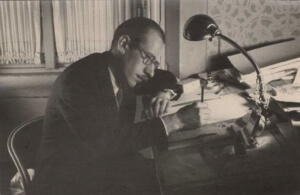

Saul Steinberg at his drawing table in his room above the Bar del Grillo, Milan, c. 1937
The artist’s journal is placed beside an intricate river-side painting, blurring the line between artistic practice and product in a way that Steinberg made his own throughout his career.
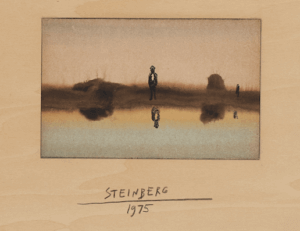

Detail and signature of The Queen Table, 1975


